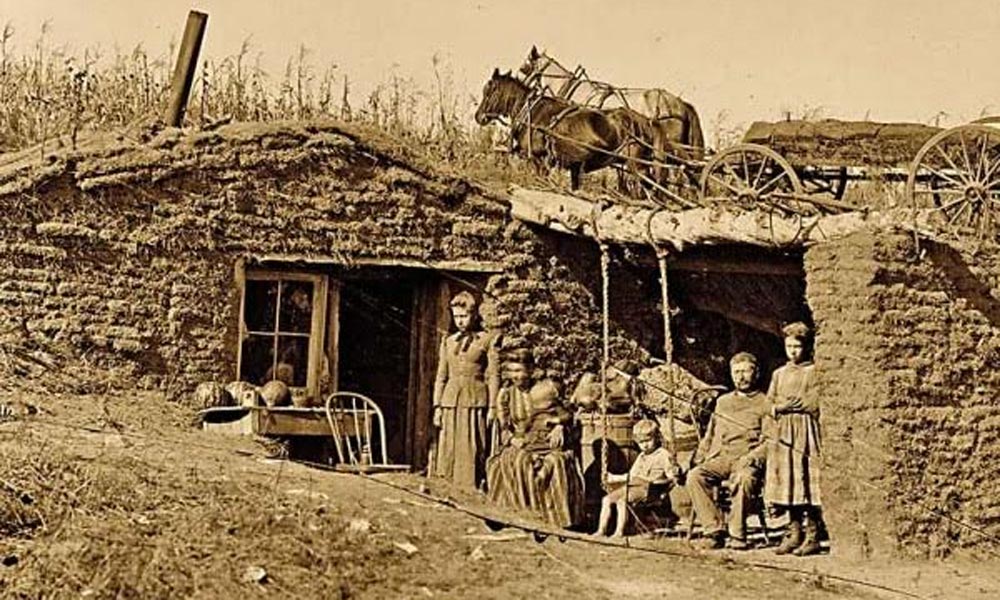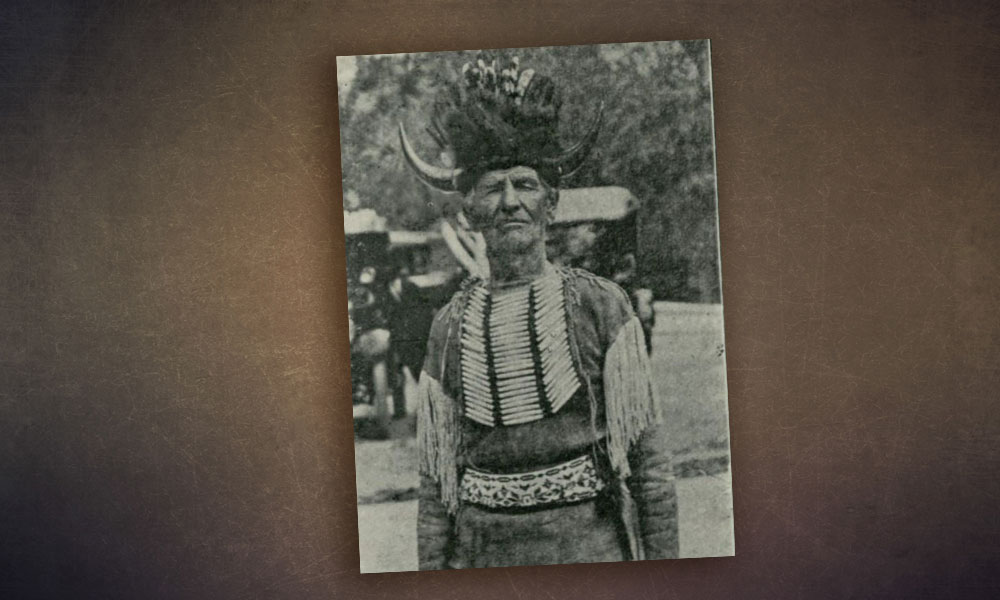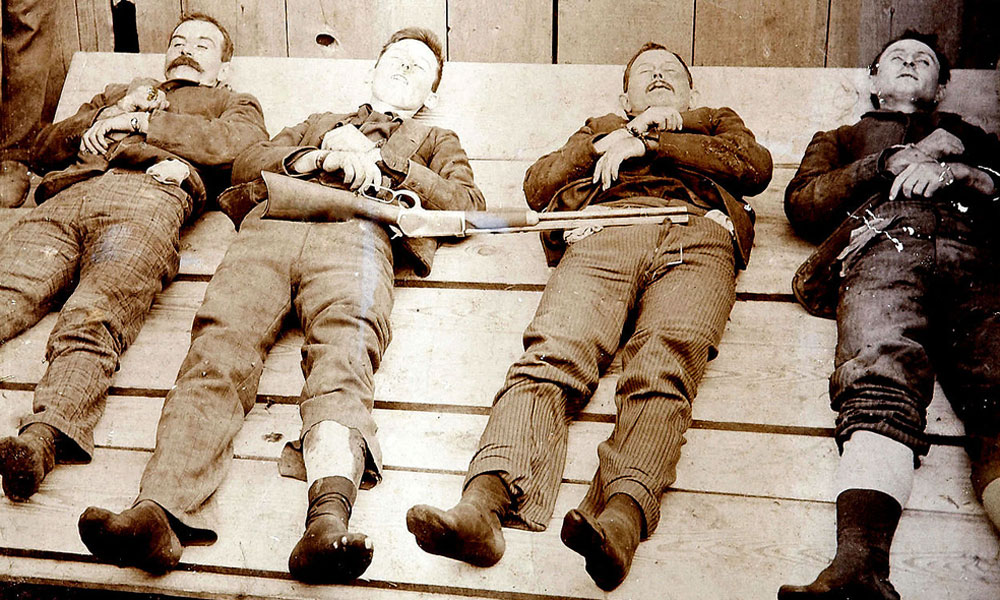
When the farmers got west of the 100th meridian they found themselves in short grass country where the grasses were gramma, needle and buffalo. The annual rainfall at 10-20 inches was more than half that in tall grass country. The free 160 acres they got with the Homestead Act would have sustained them in the well-watered lands of the 100th meridian but out on the plains it was barely enough to support a subsistence farm much less enough to raise a cash crop.
Once on the land he had to build a shelter for his family, usually a tent made of sheets and blankets. Because of the howling wind it was better to dig a hole or a cave in the side of a hill until he was able to build a sod house. These were dank, dark and often overrun with bugs and snakes.
Those dugouts were to sustain the family until a sod house could be built. Settling in areas where wood, rock and brick clay were scarce the settlers built their houses of sod that was similar to the turf homes in Ireland or the earth-covered shelters used by some of the Indians. The Mormons were the first to use this inventive method of home building by utilizing the tough network of grass roots that enmeshed the soil. They used special plows to cut the soil into blocks leaving space for doors and windows. They could build one of these in about a week and it would last ten years. It was cool in the winter and warm in the summer. It was cool in the winter and warm in the summer. Soddies were fireproof, bullet proof and could even withstand tornadoes.
After the house was built it was time to plant a crop. During the 1870s-1880’s there was still plenty of wild game to keep a family from going hungry. The men spent their days in the fields and the women trying to keeping the house in order and trying from getting pregnant every nine months or so.
From the 1840 diary of Mary Walker, mother of eight children: “Got my housework done; baked six more loaves of bread; cooked a kettle of mush; put my clothes away; set my house in order—at 9 pm was delivered with another baby.”






